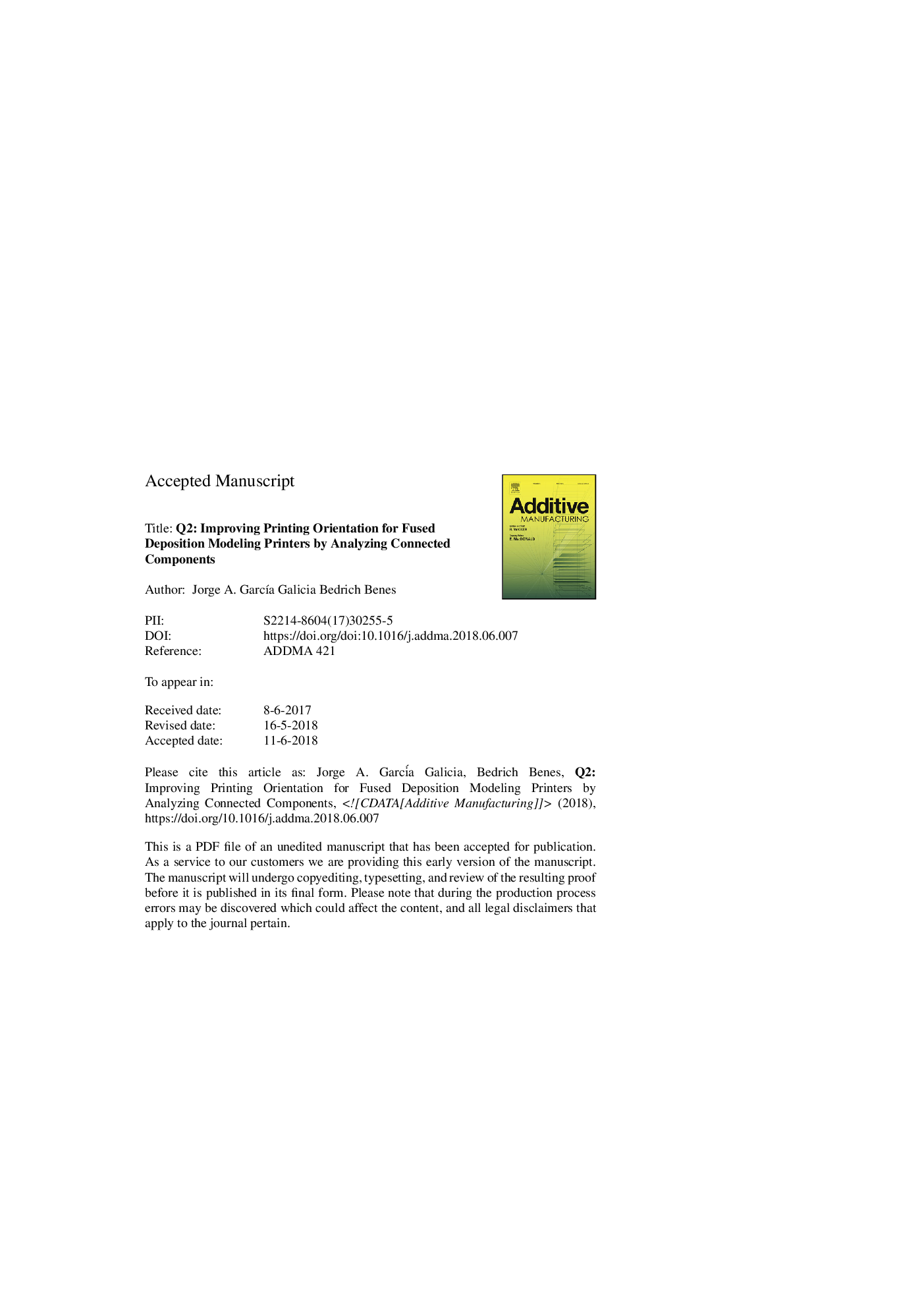| کد مقاله | کد نشریه | سال انتشار | مقاله انگلیسی | نسخه تمام متن |
|---|---|---|---|---|
| 7205807 | 1468627 | 2018 | 28 صفحه PDF | دانلود رایگان |
عنوان انگلیسی مقاله ISI
Improving printing orientation for Fused Deposition Modeling printers by analyzing connected components
ترجمه فارسی عنوان
بهبود جهت چاپ برای چاپگرهای مدل سازی رسوبدهی با تجزیه و تحلیل اجزای متصل شده
دانلود مقاله + سفارش ترجمه
دانلود مقاله ISI انگلیسی
رایگان برای ایرانیان
کلمات کلیدی
تولید افزودنی، بهینه سازی، برنامه ریزی مسیر چاپ
ترجمه چکیده
جهت گیری فضایی یک شی در یک صفحه چاپ سه بعدی، اهمیت زیادی در زمان چاپ آن دارد. به این ترتیب سرعت پردازش های چاپ سه بعدی به طور کلی می تواند با استفاده از جهت های شیء موثر افزایش یابد. این مقاله یک روش جدید برای سرعت بخشیدن به فرآیندهای چاپ است که جهت گیری حداکثر کارآیی را ارائه می دهد. این روش یک هدف را برای جسم می گیرد که تعدادی از اجزای جدا شده و فاصله بین اجزای قطع شده که باقی می مانند را به حداقل می رساند، در نتیجه به حداقل رساندن زمان لازم برای چاپ سر برای عبور از مناطق خالی. این روش همچنین ارتفاع شیء چاپ شده، حجم آن را در بر می گیرد و تعداد اجزای متصل در هر لایه را در نظر می گیرد. الگوریتم رمان ما همه چهار معیار را در نظر می گیرد که هر کدام با توجه به پارامترهای مشخص شده توسط چاپگر و پارامترهای آزمایش شده به دست می آیند. مطالعات اولیه نشان می دهد که این روش می تواند زمان چاپ را در چاپگرهای رسوبده متصل کند تا 45٪ از الگوریتم های فعلی هنر را کاهش دهد.
موضوعات مرتبط
مهندسی و علوم پایه
سایر رشته های مهندسی
مهندسی صنعتی و تولید
چکیده انگلیسی
The spatial orientation of an object on a 3D printing plate is a significant contributor to its printing time. Thus, the speed of the 3D printing processes can generally be increased by using time-efficient object orientations. This paper presents a novel method for speeding-up printing processes that employs maximally efficient orientations. This method finds an orientation for the object that minimizes the number of disconnected components and the distance between the disconnected components that remain, thereby minimizing the time needed for the printer head to traverse empty areas. The method also considers the height of the printed object, its trapped volume, and the number of connected components in each layer. Our novel algorithm considers all four criteria, each weighted according to printer-specific and experimentally-obtained parameters. Preliminary trials demonstrate that this methodology can decrease printing times on fused deposition printers to 45% of that of current state of the art algorithms.
ناشر
Database: Elsevier - ScienceDirect (ساینس دایرکت)
Journal: Additive Manufacturing - Volume 22, August 2018, Pages 720-728
Journal: Additive Manufacturing - Volume 22, August 2018, Pages 720-728
نویسندگان
Jorge A. GarcÃa Galicia, Bedrich Benes,
